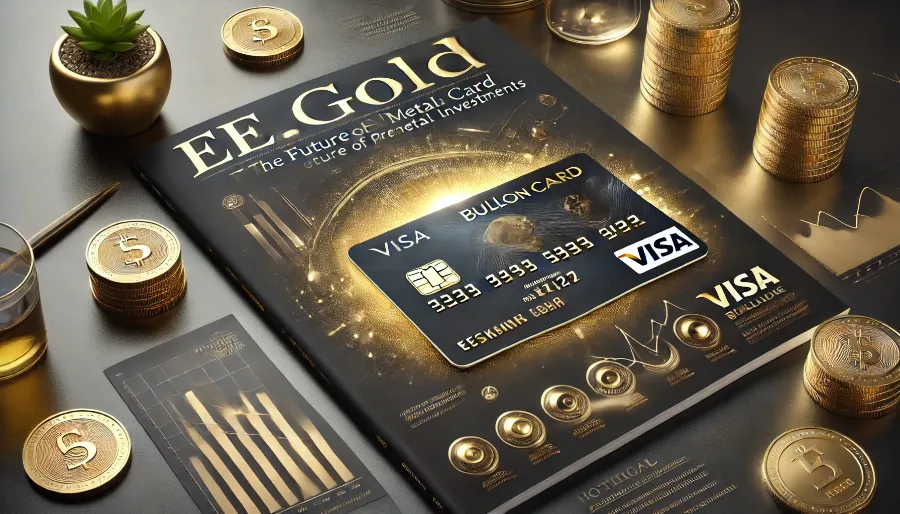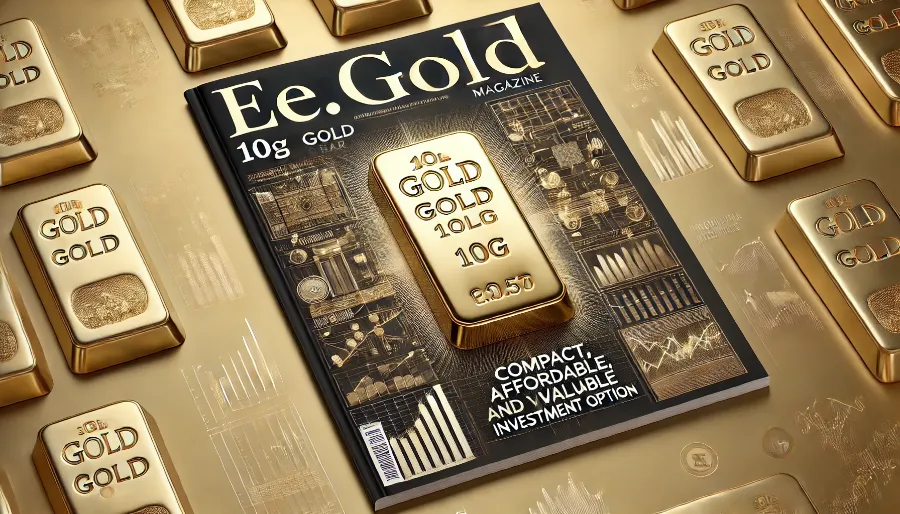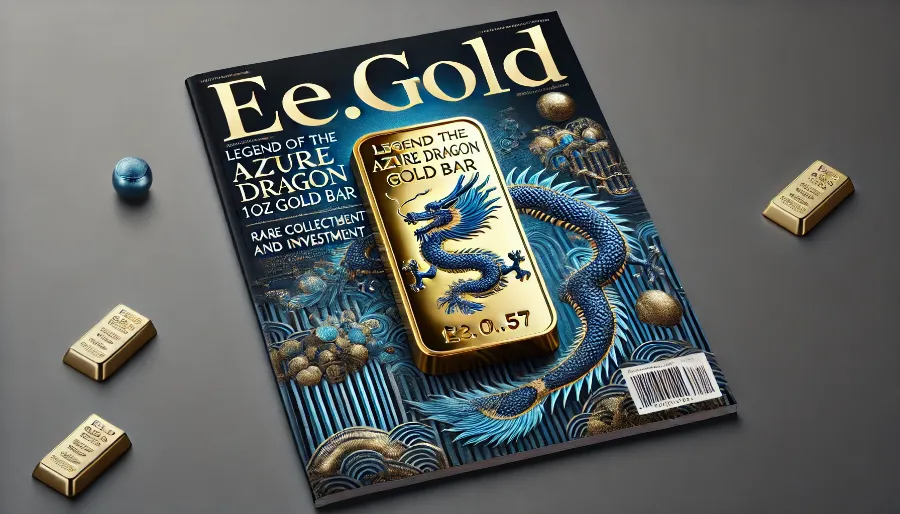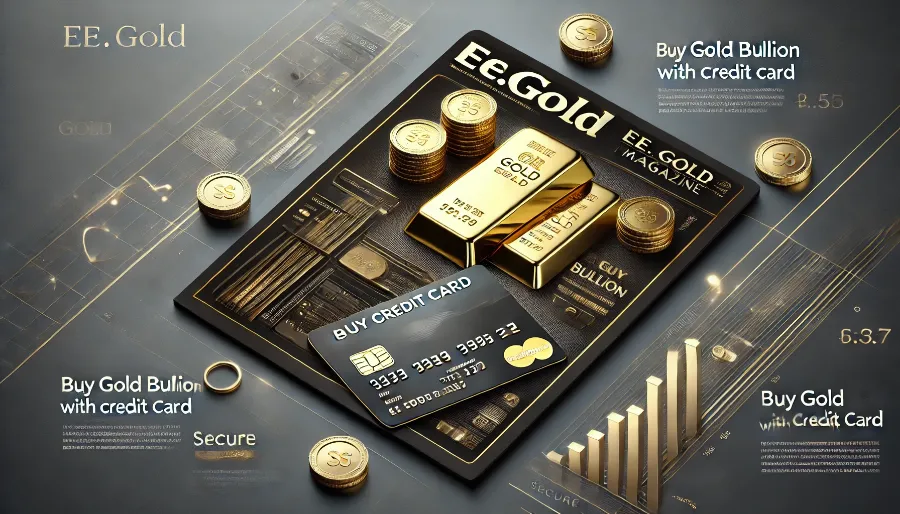What is a Kinebar Gold Bar
A Kinebar gold bar is a premium gold investment product that stands out due to its advanced security features. Produced by globally renowned refineries such as Argor-Heraeus, the Kinebar incorporates cutting-edge Kinegram® technology—a unique holographic design applied to the bar’s reverse side. This hologram not only enhances the bar’s aesthetic appeal but also acts as a robust anti-counterfeiting measure, ensuring the authenticity of the gold. With a purity of .9999 (24 karats), the Kinebar gold bar combines innovation, security, and intrinsic value, making it an ideal choice for both collectors and investors.
Features of the Kinebar Gold Bar
The Kinebar gold bar is crafted from .9999 fine gold, ensuring its status as an investment-grade asset. The standout feature of the Kinebar is the Kinegram® hologram, a sophisticated design that reflects light to produce vibrant, dynamic patterns. This hologram is seamlessly integrated into the bar’s surface, making it nearly impossible to replicate and providing an unparalleled level of security. Each Kinebar gold bar is also stamped with essential details, including weight, purity, and the refinery’s logo. Additionally, the bar comes in tamper-evident packaging with an assay certificate, guaranteeing its authenticity and quality.
Benefits of Investing in a Kinebar Gold Bar
The Kinebar gold bar offers several advantages for investors and collectors. Its innovative hologram technology provides a high level of security, ensuring that the bar is authentic and free from counterfeiting. The Kinebar’s unique design also adds aesthetic appeal, making it a standout piece in any collection. With its high purity of .9999 fine gold, the Kinebar retains significant intrinsic value, serving as a reliable hedge against inflation and economic instability. The bar’s global recognition and LBMA certification ensure liquidity, allowing investors to buy, sell, or trade it easily in international markets.
How to Buy a Kinebar Gold Bar
Purchasing a Kinebar gold bar is straightforward when working with a reputable dealer. Start by researching trusted platforms such as EE.GOLD, APMEX, or JM Bullion to ensure you receive authentic products. Check the current gold spot price to determine the base value of gold and compare premiums charged by different dealers. Select your preferred payment method, which could include credit cards, bank transfers, or cryptocurrency. Ensure that the Kinebar comes in its original tamper-evident packaging with a certificate of authenticity. Finally, decide on a secure storage option, whether at home, in a bank deposit box, or through professional vault storage.
Price of a Kinebar Gold Bar
The price of a Kinebar gold bar depends on the current gold spot price and the dealer’s premium. For example, if the spot price of gold is $60 per gram, the base price of a 1g Kinebar would be $60. Dealers typically add a premium of 3% to 8%, depending on the bar’s size, design, and market demand. Larger Kinebars, such as 50g or 100g, generally have lower premiums per gram compared to smaller bars, making them more cost-effective for bulk investments. Comparing prices across multiple dealers ensures that you get the best value for your purchase.
Storage Options for a Kinebar Gold Bar
Proper storage is crucial to protect your Kinebar gold bar and maintain its value. Home storage is an option for smaller collections, but it requires a high-quality, fireproof, and tamper-resistant safe. For larger holdings or added security, consider using a bank safety deposit box or professional vault storage. Many dealers, including EE.GOLD, offer insured storage solutions with climate-controlled environments to safeguard your investment. Keeping the Kinebar in its original tamper-evident packaging is essential to preserve its authenticity and holographic features.
Why the Kinegram Hologram Sets the Kinebar Apart
The Kinegram® hologram is the defining feature of the Kinebar gold bar. This advanced security element is created using micro-structured optical technology, producing a dynamic and visually stunning design that changes as it reflects light. Beyond its aesthetic appeal, the hologram serves as a powerful anti-counterfeiting measure, making it virtually impossible to replicate. This ensures that Kinebars are among the most secure gold bars on the market, providing peace of mind for investors and collectors alike.
Comparing the Kinebar Gold Bar to Other Gold Bars
While standard gold bars focus primarily on purity and weight, the Kinebar gold bar offers an added layer of security and elegance. The Kinegram® hologram sets it apart from traditional bars, making it an excellent choice for those who value both security and aesthetics. Compared to coins, which may carry numismatic value, the Kinebar focuses on intrinsic gold content while incorporating innovative features. Its LBMA certification ensures global recognition and liquidity, making it a versatile asset for any portfolio.
Selling a Kinebar Gold Bar for Maximum Value
The Kinebar gold bar’s high liquidity and global recognition make it easy to sell when needed. Start by checking the current gold spot price to determine the market value of your bar. Approach reputable dealers or platforms such as EE.GOLD or JM Bullion, which offer competitive buyback programs. Ensure the Kinebar is in its original tamper-evident packaging with the hologram intact, as these factors significantly enhance its resale value. Keep records of the sale for tax purposes, as profits may be subject to capital gains taxes in certain jurisdictions.
Why Trusted Dealers Like EE.GOLD Are Essential
When investing in a Kinebar gold bar, the choice of dealer is critical to ensuring a secure and transparent transaction. Trusted platforms like EE.GOLD offer certified Kinebars produced by LBMA-accredited refineries, guaranteeing authenticity and quality. EE.GOLD provides transparent pricing with no hidden fees, secure payment options, and insured shipping to protect your investment during delivery. For added security, EE.GOLD also offers professional vault storage solutions, allowing investors to safeguard their gold bars in climate-controlled facilities.
How the Kinebar Gold Bar Fits into a Diversified Portfolio
The Kinebar gold bar is an essential component of a well-diversified investment portfolio. Gold has historically served as a reliable hedge against inflation, currency devaluation, and market volatility, making it a safe-haven asset in times of economic uncertainty. The Kinebar, with its unique Kinegram® hologram and LBMA certification, adds an additional layer of security and liquidity, making it even more attractive to investors. By incorporating Kinebars into your portfolio, you can balance the risks associated with stocks, bonds, and other traditional investments while preserving your wealth over the long term. Its global recognition ensures that it remains liquid and tradable across international markets, providing flexibility when needed.
Why the Kinebar Gold Bar Appeals to Collectors
In addition to its investment value, the Kinebar gold bar is highly sought after by collectors due to its innovative design and advanced security features. The Kinegram® hologram transforms each bar into a visually stunning piece of art that changes dynamically as light reflects off its surface. This aesthetic appeal, combined with the bar’s exclusivity and the prestige of being produced by leading refineries such as Argor-Heraeus, makes it a prized addition to any collection. Collectors also appreciate the tamper-evident packaging and unique serial numbers, which add an extra layer of authenticity and traceability. For those who value the intersection of art, technology, and investment, the Kinebar is an unrivaled choice.
The Role of Kinebar Gold Bars in Modern Investment Strategies
The Kinebar gold bar represents a modern approach to gold investing, combining traditional bullion with cutting-edge technology. Its advanced security features address one of the primary concerns of gold investors: authenticity. The Kinegram® hologram eliminates the risk of counterfeiting, ensuring that your gold investment is secure. This makes the Kinebar an ideal choice for investors who prioritize safety and reliability. Moreover, its compact size and variety of weight options allow for flexibility in portfolio allocation. Whether you’re investing in a single bar or accumulating multiple sizes over time, the Kinebar fits seamlessly into both long-term and short-term investment strategies.
Selling a Kinebar Gold Bar in a Competitive Market
The global recognition of Kinebar gold bars makes them highly liquid and easy to sell in competitive markets. When selling a Kinebar, ensure that it remains in its original tamper-evident packaging with the Kinegram® hologram intact. This guarantees its authenticity and enhances its resale value. Start by researching the current gold spot price to determine the bar’s market value. Approach trusted dealers or platforms such as EE.GOLD, APMEX, or JM Bullion that offer competitive buyback rates. Keeping detailed records of your purchase and sale is essential for tax reporting and verifying the transaction’s legitimacy. The Kinebar’s high demand among investors and collectors ensures that you can sell it quickly and at a fair price.
Why the Kinebar Gold Bar is a Forward-Thinking Investment
As the gold market evolves, innovations like the Kinegram® hologram are setting new standards for authenticity, security, and design. The Kinebar gold bar is a forward-thinking investment that appeals to a new generation of investors who value transparency, technology, and sustainability. Its advanced features not only protect your investment but also enhance its appeal in a competitive market. Additionally, as concerns about counterfeiting continue to grow, the Kinebar’s robust security measures make it a standout choice for those seeking peace of mind in their gold investments.
The Future of Kinebar Gold Bars in a Changing Economy
The Kinebar gold bar is well-positioned to remain a top choice for investors as economic uncertainties persist. Gold has always been a trusted store of value, and the Kinebar elevates this status by incorporating modern features that meet the demands of today’s investors. Its unique blend of technology and tradition makes it a versatile asset that adapts to changing market conditions. Platforms like EE.GOLD make it easier than ever to purchase, store, and manage Kinebar investments, ensuring that this innovative product continues to thrive in the global gold market. Whether you’re a seasoned investor or new to precious metals, the Kinebar gold bar offers a secure, liquid, and visually appealing way to diversify your portfolio and protect your wealth.
Final Thoughts on the Kinebar Gold Bar
The Kinebar gold bar is a revolutionary product that combines the timeless value of gold with state-of-the-art security and design. Its Kinegram® hologram ensures authenticity, making it one of the most secure gold bars available today. With its high purity, LBMA certification, and global recognition, the Kinebar is a versatile asset that appeals to both investors and collectors. Whether you’re looking to hedge against inflation, diversify your portfolio, or acquire a visually stunning collectible, the Kinebar delivers on all fronts. Trusted platforms like EE.GOLD make it simple to buy, store, and sell Kinebar gold bars, providing a seamless experience for investors at all levels. Embrace the future of gold investing with the Kinebar gold bar and enjoy the benefits of owning this innovative and secure asset.
NOTE
This Content is the copyrighted content of EE.GOLD. All rights are reserved. You are welcome to share or use our content only by including direct links to our website. Any other form of reproduction, distribution, or use without proper attribution is strictly prohibited.
This Content is intended solely for educational purposes. The information provided does not constitute financial or investment advice.
Please note that Digital Storage Receipt, Secure Storage Solutions, and Physical Gold Sales are the only services offered by EE.GOLD.
We strictly adhere to government regulations and are firmly against all illegal financial or investment activities globally.
For further inquiries, feel free to contact us through our official channels.




















.png)

